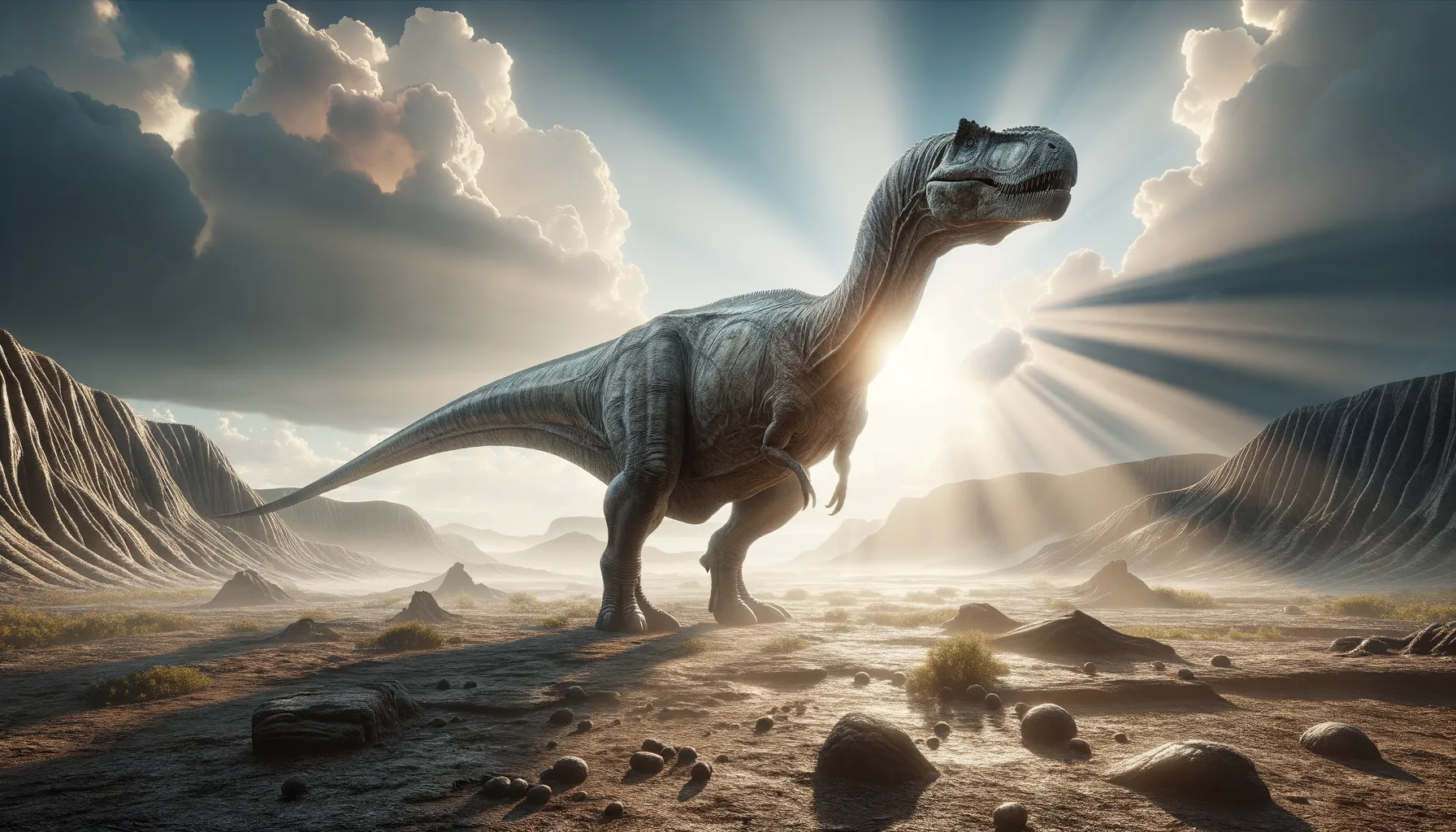
Dystylosaurus
A giant of the Jurassic, slow but mighty.
Period
Jurassic
Length
Measured about 80 to 90 feet in length.
Height
Stood around 12 to 15 feet tall.
Weight
It weighed approximately 20 to 30 tons.
Dystylosaurus, a large sauropod dinosaur, roamed the Earth during the late Jurassic period. Originally discovered in North America in the 1960s, this massive creature is believed to have weighed between 20 to 30 tons and measured up to 90 feet in length. Despite its size, little is known about its precise behavior and lifestyle. However, its size and structure suggest it was adapted to a herbivorous diet and a relatively slow-moving life.
Diet
Dystylosaurus was herbivorous, feeding primarily on the plentiful vegetation of the Jurassic period. Its diet likely consisted of ferns, cycads, and conifer leaves, which it could reach with its long neck.
Hunting
Being a herbivore, Dystylosaurus did not hunt. Instead, it would have spent its time grazing slowly across its habitat, seeking out the most nutritious plant material.
Environmental challenges
Living during the Jurassic period, Dystylosaurus faced challenges such as fluctuating climates and varying plant availability. Predators, like large theropods, may have posed a threat, especially to young and sick individuals. Environmental changes could have affected their food sources, forcing them to migrate to other areas.
Speed
Dystylosaurus was likely slow-moving.
Lifespan
Estimated to have lived several decades.
First discovery
Discovered in the 1960s in North America.
Fun Facts
- Dystylosaurus is a dinosaur that lived during the Late Jurassic period, around 150 million years ago.
- The name 'Dystylosaurus' means 'double column lizard', which hints at its large, pillar-like legs.
- Dystylosaurus is known from very limited fossil remains, which makes it a bit of a mystery in the dinosaur world.
- This dinosaur is believed to have been a massive herbivore, feasting on plants and trees of its time.
- Dystylosaurus is often compared to other giant sauropods, such as Brachiosaurus, due to its size and shape.
- It was discovered in the Morrison Formation, a famous fossil site in the western United States.
- Despite its notoriety, some scientists debate whether Dystylosaurus is a distinct genus or potentially part of another known dinosaur.
Growth and Development
Dystylosaurus hatched from eggs and underwent rapid growth to reach adulthood. As with many sauropods, its growth rate was critical for survival, making it less vulnerable to predators over time. Young individuals likely stayed close to adults for protection.
Habitat
Dystylosaurus inhabited forested and partly open landscapes where vegetation was abundant. Its environment would have included areas near rivers or lakes, supporting diverse plant life necessary for its diet. These landscapes provided both food and the opportunity for social behavior with other megafauna.
Interaction with other species
While Dystylosaurus faced potential threats from predators, its massive size reduced the risk. It may have shared its habitat with other herbivorous dinosaurs, competing for resources. Interaction with other species was likely passive, focused more on avoidance than aggression.
Natural lifespan
Dystylosaurus could naturally live for several decades in the wild.
Reproduction
Dystylosaurus reproduced by laying eggs, likely in communal nesting sites for added protection. Nesting likely occurred in seasonal patterns, coinciding with the availability of food and the best conditions for hatchling survival. After laying eggs, parents may have provided limited care, leaving offspring to grow independently.
Social behaviour
Dystylosaurus might have exhibited herd-like behavior, moving in groups to protect themselves from predators. Social structures might have been loose, with individuals coming and going as they grazed. Communication within the group could have been achieved through vocalization or tail movements.
Fossil locations
Fossils of Dystylosaurus have been found primarily in North America, specifically in regions suggesting ancient floodplains. These locations provide insight into their ecological preferences and potential migration patterns. Fossil findings are limited, contributing to the ongoing mystery of its existence.
